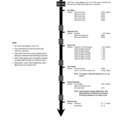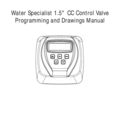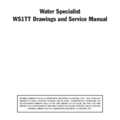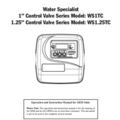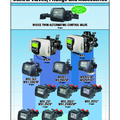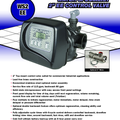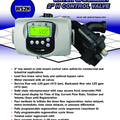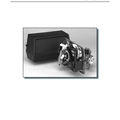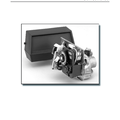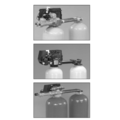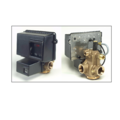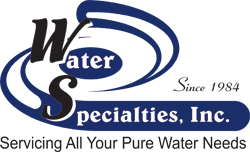COMMERCIAL SOFTENERS
A Water Softener is an ion exchanger.
![[Water Softener]](/sites/default/files/inline-images/watersoftpic_0.gif) Hard water—water with high calcium/magnesium content—enters the softener through the “In” port. It passes through the control valve and into the tank, where it goes from top to bottom through a specially prepared resin that softens it.
Hard water—water with high calcium/magnesium content—enters the softener through the “In” port. It passes through the control valve and into the tank, where it goes from top to bottom through a specially prepared resin that softens it.
The resin consists of specially manufactured beads that have been saturated with sodium ions. “Softening” occurs as the hardness minerals in the water attach themselves to the resin and are “exchanged” for sodium.
The softened water then enters the long center tube, called a riser, via the strainer basket in the bottom of the tank and passes upward through the riser. The water exits the softener via the control valve and is sent home.
When hardness minerals saturate the resin, the softener automatically goes into regeneration. (A timer or a meter, depending on the type of unit purchased initiates the regeneration process.) By this process the hardness minerals are washed down the drain and the resin bed is rinsed, resettled, and recharged with sodium. It is now ready to soften water.
The regeneration process is accomplished by passing very salty water from the brine tank through the resin. The brine tank must remain filled with salt at all times so that it can regenerate the softening resin again and again. Commercial softener design and engineering is both an art and a science. Many of our certified sales people have over 20 years of hands on experience they're putting to use for our customers.
Important Considerations:
- Make sure your buying a reliable softener controller (some of our competitors units require rebuilding a series of valves every 5 years).
- Pipe size
- Flow rate
- Split stream option. Save on salt, by softening 1/2 or 1/4 of the water to get the water hardness to an acceptable level.
- Buying two smaller softener units and linking them together verses 1 larger unit. May save money and increase efficiency.
- Brine reclaim system. Increases efficiency by reclaiming some of the salt discharge.
- Using a portable exchange (PE) softener. Great for areas where water is very limited, there is not a drain, or chloride & sodium discharge is not allowed.
Water Specialties, Inc. has remained a profitable and sought after business since 1984 because of one important relationship, the one foster with our customers. It's simple really; we take excellent care of you, so you can take care of us with repeat business and referrals. We're quite glad our competition hasn't caught on to this fundamental business concept.

